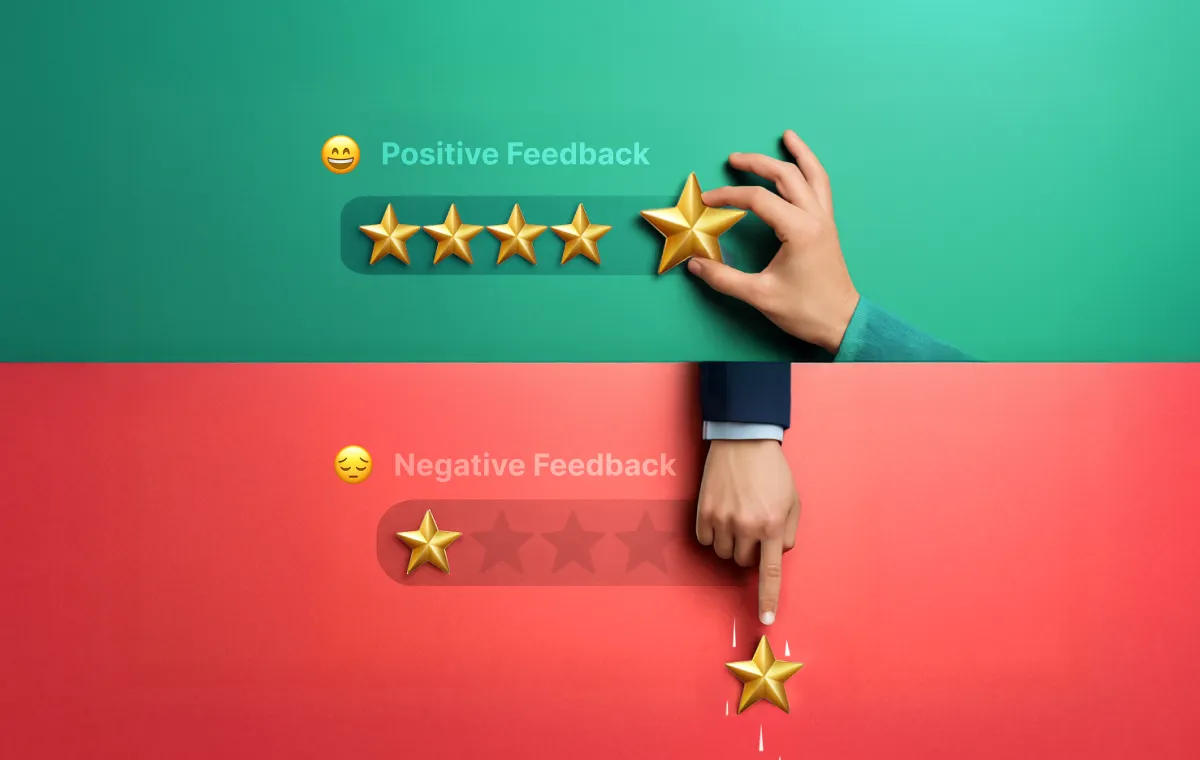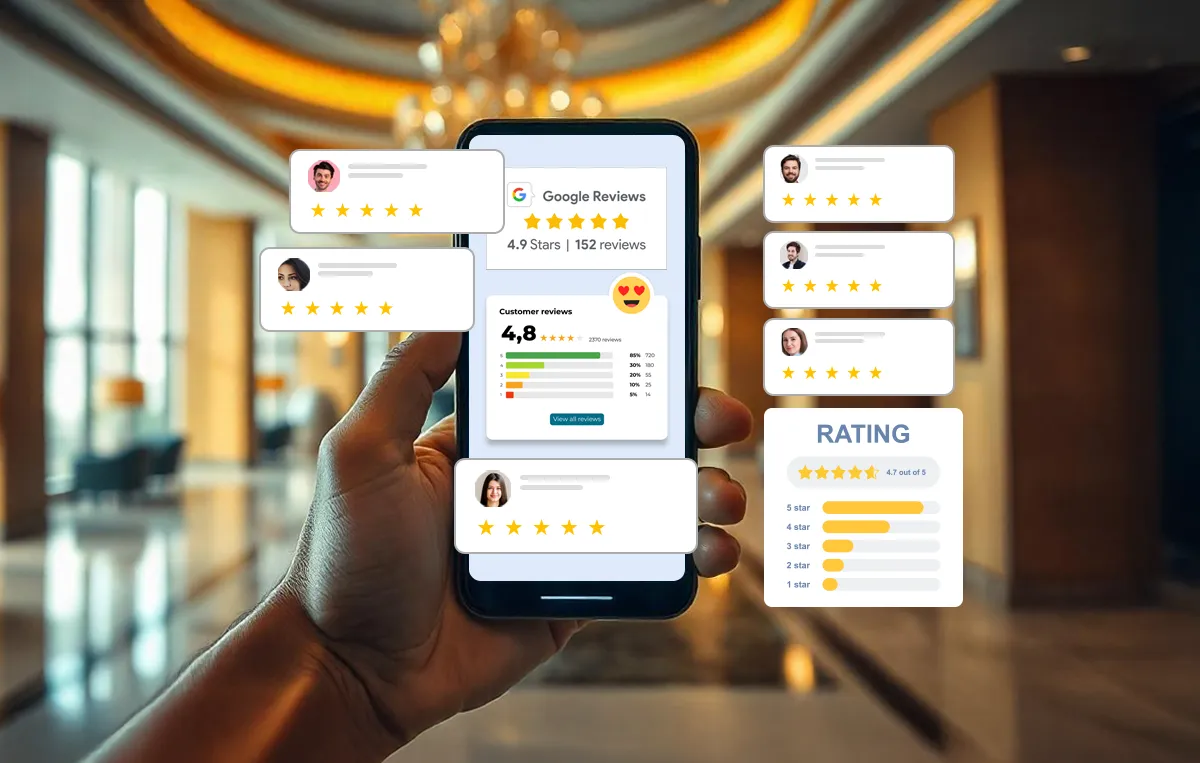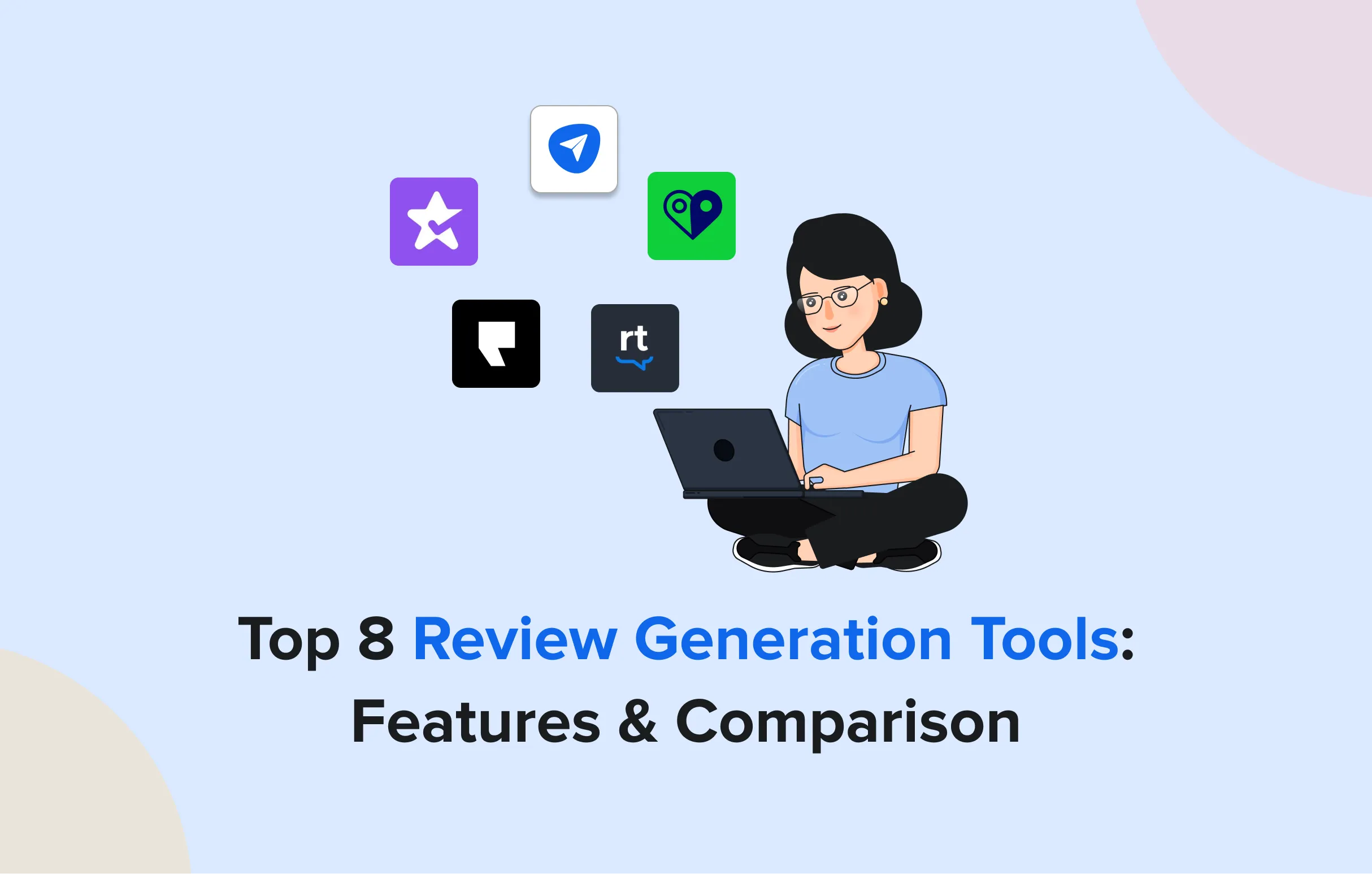Review gating is the practice in which negative feedback is filtered out while positive feedback is allowed. This practice is good for maintaining a business’s high ratings and strong online presence, but it has its own drawbacks.
Yelp and Google do not allow review gating. Reviews found to have been gated can be deleted, and the business’s profile can be blocked permanently.
Worse, it damages trust—customers value honest, unfiltered feedback. Instead of taking shortcuts, businesses should focus on ethical ways to collect and manage reviews. In this blog, we’ll explore the risks of review gating and how to encourage reviews correctly.
What is Review Gating?
Ever scrolled through a business’s reviews and wondered why they have almost no bad ratings? That might not be by accident—it could be reviewing gating at work.
Review gating is when businesses filter customer feedback, ensuring that only positive reviews make it to public platforms like Google, Yelp, or TripAdvisor. Negative feedback? That gets redirected to private channels and is never seen by potential customers.
At first glance, it might seem like a smart way to maintain a good reputation. But in reality, it’s misleading, violates Google’s policies, and can backfire badly. Let’s break it down.
How Do Businesses Filter Reviews?
Not every business outright deletes bad reviews. Instead, they use more subtle tactics to keep negative feedback from going public. Here’s how:
1. The “Pre-Screening” Trick
Some businesses send a post-purchase email or survey asking, “How was your experience?” If the customer gives a high rating (say, 4 or 5 stars), they’re directed to leave a Google or Yelp review. But if the rating is lower, they’re taken to a private feedback form instead.
Example: A hotel emails guests after their stay. Happy guests are encouraged to post on TripAdvisor, while unhappy ones are asked to “share their feedback privately” instead. The result? The hotel’s online ratings stay artificially high.
2. The Reward-for-Review Approach
This is yet another subtle strategy. Companies use discount incentives or gifts, but only if the customer reviews their business positively. That means dissatisfied customers are never given the opportunity to express their thoughts publicly.
Example: A restaurant gives a customer a 10% discount on their next meal. However, this discount only applies if the customer leaves a five-star review on Google. If someone had a bad experience? No discounts and no incentives to post a review.
How Review Gating Manipulates Public Perception
Review gating doesn’t just filter feedback—it creates a false narrative. By blocking or redirecting negative reviews, businesses present an overly polished, unrealistic image of their products or services.
Here’s how it misleads potential customers:
- It makes a business seem better than it really is. If all reviews are glowing, customers assume they’ll have a perfect experience—until reality proves otherwise.
- It hides real customer concerns. Instead of seeing balanced feedback, potential buyers only see praise, making it harder for them to make informed decisions.
- It backfires when customers catch on. When people realize a business is filtering reviews, trust erodes fast. A few negative but authentic reviews actually make a business look more transparent and trustworthy.
In the end, review gating is a short-term fix that creates long-term damage. Customers value honesty over perfection, and businesses that embrace real feedback build stronger, more credible reputations.
Why Is Review Gating a Problem?
At first, review gating might seem like a harmless way to maintain a great online reputation. But in reality, it’s a risky shortcut that can cost businesses more than just a few bad reviews. From violating platform policies to losing customer trust, here’s why review gating isn’t worth the gamble.
Google (and Other Platforms) Don’t Allow It
Think you can get away with filtering reviews? Google says no. Review gating is explicitly banned by Google, Yelp, and other major review platforms. But still, there are some ethical ways to get more 5-star Google reviews to maintain your ratings and avoid Google penalties.
Because their policies are clear—all customer feedback, good or bad, must be treated equally.
If a business is caught reviewing gating, the consequences can be severe. Google can:
- Remove all reviews – even the legitimate positive ones.
- Drop the business’s search rankings, making it harder to attract new customers.
- Suspend or penalize the Google Business Profile, cutting off a major source of traffic.
And it’s not just Google. Yelp has strict review guidelines and actively warns businesses not to ask for or manipulate reviews in any way.
In short, if you’re gating reviews, you’re putting your entire online presence at risk.
It Could Cost You Big Time (Literally!)
Beyond platform penalties, review gating is now under legal scrutiny. In October 2024, the FTC introduced a rule banning fake reviews and suppressing negative ones, with fines of up to $51,744 per violation.
That’s a huge risk—especially as enforcement is expected to tighten in 2025.
Need proof? The case of Fashion Nova, a major online retailer that the FTC fined $4.2 million for blocking negative reviews. Their mistake? Hiding anything below four stars and misleading customers into thinking their products were better than they actually were.
If a business with a massive budget like Fashion Nova couldn’t escape the consequences, smaller businesses stand no chance of getting away with review gating.
Customers Can Tell When Something’s Off
Even if a business isn’t caught by Google or fined by the FTC, there’s another big risk—losing customer trust.
When a business has only glowing 5-star reviews and zero complaints, doesn’t it seem a little… suspicious? Customers aren’t naive. They know that no business is perfect, and seeing only positive reviews can actually make them more skeptical.
Research has found that consumers survey brands more favorably if the business has a blend of bad reviews alongside good ones. Not all negative remarks kill the deal; they actually enhance the value of positive ones.
And once trust is lost, it’s nearly impossible to rebuild.
In October 2024, the Federal Trade Commission (FTC) issued a rule against illegitimate reviews and the concealment of genuine negative reviews. With this new rule, it is possible to impose sanctions of as much as 51,744 dollars for every breach. Although there are no reported cases yet, it is only a matter of time.
Simply put, review gating isn’t just risky – it’s now illegal. The smartest move? Focus on ethical ways to collect and manage reviews.
Google’s Policy on Review Gating
Google takes online reviews seriously. To maintain trust and transparency, Google explicitly prohibits review gating, considering it a deceptive practice. If a business tries to filter or manipulate reviews, it risks serious consequences, including losing all its reviews entirely.
Let’s break down Google’s stance and how businesses get caught.
What Do Google’s Guidelines Say?
Google’s prohibited content policy clearly states:
“Discouraging or prohibiting negative reviews, or selectively soliciting positive reviews from customers” is not allowed.
This means businesses must request reviews from all customers, not just happy ones. Any attempt to influence or filter public feedback violates Google’s rules and can lead to penalties.
What Happens If You Get Caught?
If Google detects review gating, businesses can face serious consequences:
- Reviews Removed: Google may delete not just the gated reviews but all of a business’s reviews.
- Lower Search Rankings: A flagged business may lose ranking power, making it harder for potential customers to find it.
- Business Listing Suspension: In extreme cases, Google can suspend a business’s Google Business Profile, cutting off traffic from search results.
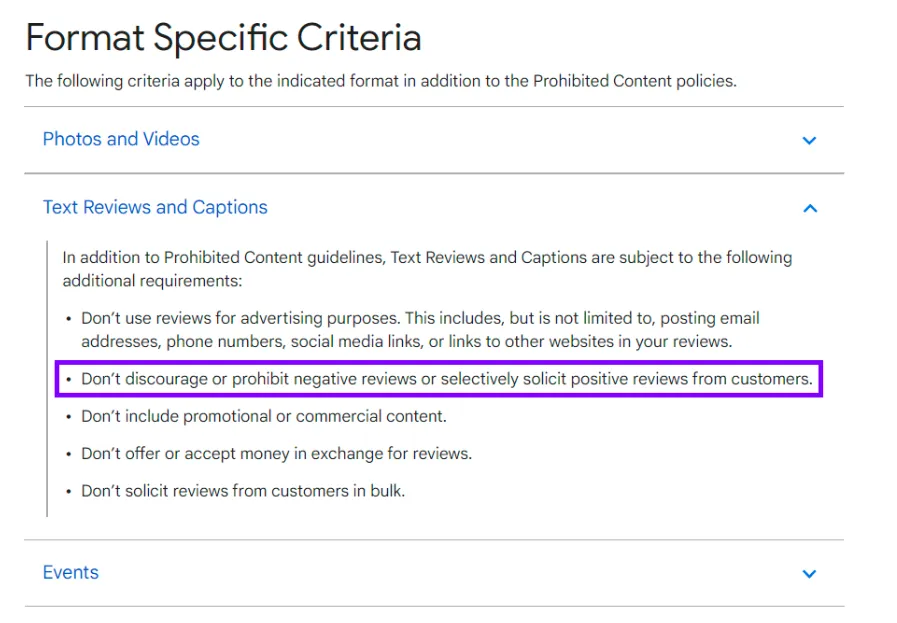
How Does Google Detect Review Gating?
Platforms like Google and Yelp use multiple methods to catch businesses engaging in review gating. Here’s how:
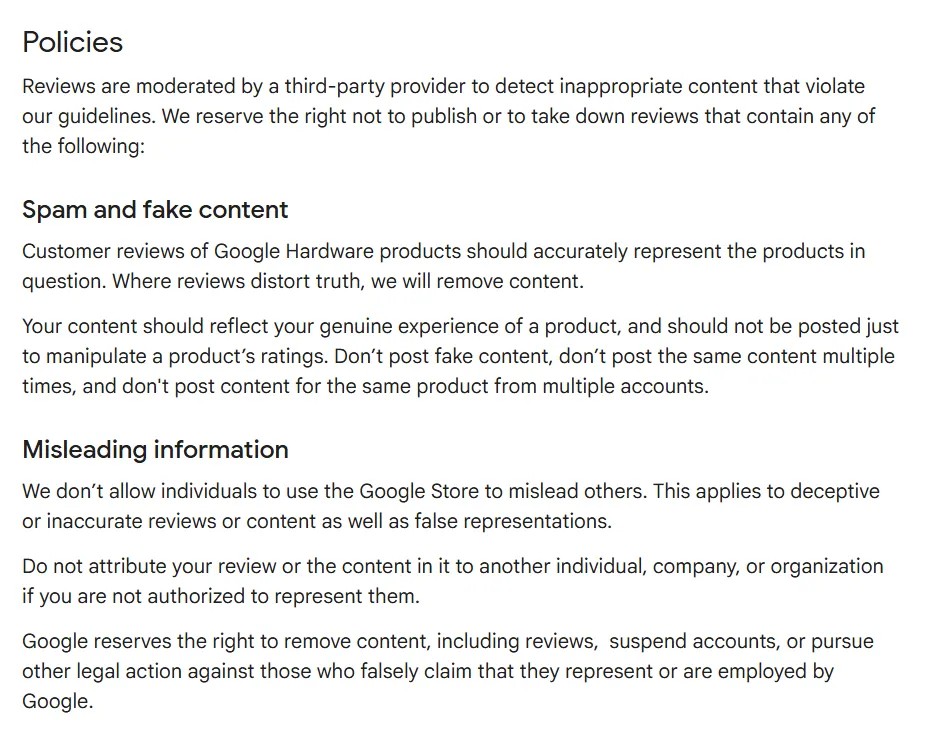
1. Algorithmic Detection
Google’s AI-powered algorithms analyze suspicious review patterns, such as:
- A sudden surge of only positive reviews with no negatives.
- Many reviews come from the same source or location.
- Unusual review timing, like a large batch of 5-star reviews appearing after a customer feedback campaign.
These patterns signal unnatural review activity, triggering an investigation.
2. User Reports & Complaints
If customers suspect a business is blocking or redirecting negative reviews, they can report it directly to Google. Enough complaints can lead to a manual review and potential penalties.
3. Review Audits by Platforms
Google and other review platforms sometimes audit businesses’ review solicitation methods. If they find that a company is only asking happy customers to leave public reviews while redirecting others to private feedback, it can be flagged as review gating.
Google’s message is clear—all customers should have an equal opportunity to leave a review. The potential downsides of trying to manipulate the system with review gating are simply not worth it. Instead, businesses should try and find legal options to collect feedback as thoroughly as possible.
Ethical Ways to Collect More Positive Reviews
If you’re trying to obtain positive reviews, trying to control the narrative does not work- instead, change the experience for the better. Customers will tremendously appreciate your services and take time out to share their experience when they feel appreciated, listened to, and cared for.
So, how do you encourage great reviews without breaking ethical guidelines? Let’s explore the right way to do it.
Ask Customer for Honest Feedback
The easiest way to get more positive reviews? Ask for them the right way—but ask everyone.
Many businesses make the mistake of only reaching out to satisfied customers. That’s a form of review gating and can get you into trouble with Google. Instead, encourage all customers to share their thoughts, good or bad.
- Timing is key. The best time to request a review is right after a positive experience—whether it’s a completed service, a purchase, or a support interaction.
- Make it easy. Send a follow-up email or SMS with a direct link to your review page. The fewer clicks, the better.
- Be transparent. Let customers know their honest feedback helps improve the business. People appreciate brands that value their opinions.
Deliver Great Service—The Reviews Will Follow
No amount of review requests can replace a genuinely great customer experience. If customers love what you offer, they’ll talk about it—no prompting needed.
- Go beyond expectations. A small, unexpected gesture—like a handwritten note or an extra tip—can turn an average experience into a 5-star one.
- Fix issues before they escalate. If a customer is unhappy, don’t wait for them to leave a bad review—address their concerns quickly and turn the situation around.
- Engage with feedback. Replying to both positive and negative reviews shows that you care. In many cases, a well-handled complaint can win back an unhappy customer.
Automate Review Requests (But Keep It Fair)
Automation makes it easier to collect reviews—but only if you do it ethically.
- Use CRM tools to send review requests automatically, ensuring all customers have an equal chance to respond.
- Add QR codes to receipts, packaging, or checkout pages so customers can leave reviews instantly.
- Never filter responses—whether the feedback is good or bad, let it come through naturally.
What NOT to do: Some businesses try to influence reviews by offering discounts only for positive feedback or by blocking bad reviews from being published. This is review gating and can lead to penalties.
Ethical review management builds trust, boosts brand authority, and makes sure you follow platform rules. This is where SocialPilot Reviews comes in.
If you’re looking for a smart, automated, and ethical way to manage reviews, SocialPilot Reviews has you covered. Here’s how it helps businesses collect, respond to, and market reviews—without breaking any rules.
Automate Review Requests (Without Bias!)
Asking for reviews shouldn’t be a manual, time-consuming process. SocialPilot Reviews allows businesses to automate review requests via email and SMS, ensuring:
- Consistent outreach to all customers, not just the happy ones.
- Strategic timing—requests are sent right after a purchase or service, increasing response rates.
- Zero manual effort—saving time while promoting fairness.
With SocialPilot Reviews, you have the option to not filter the feedback and simply make it easier for customers to share their thoughts.
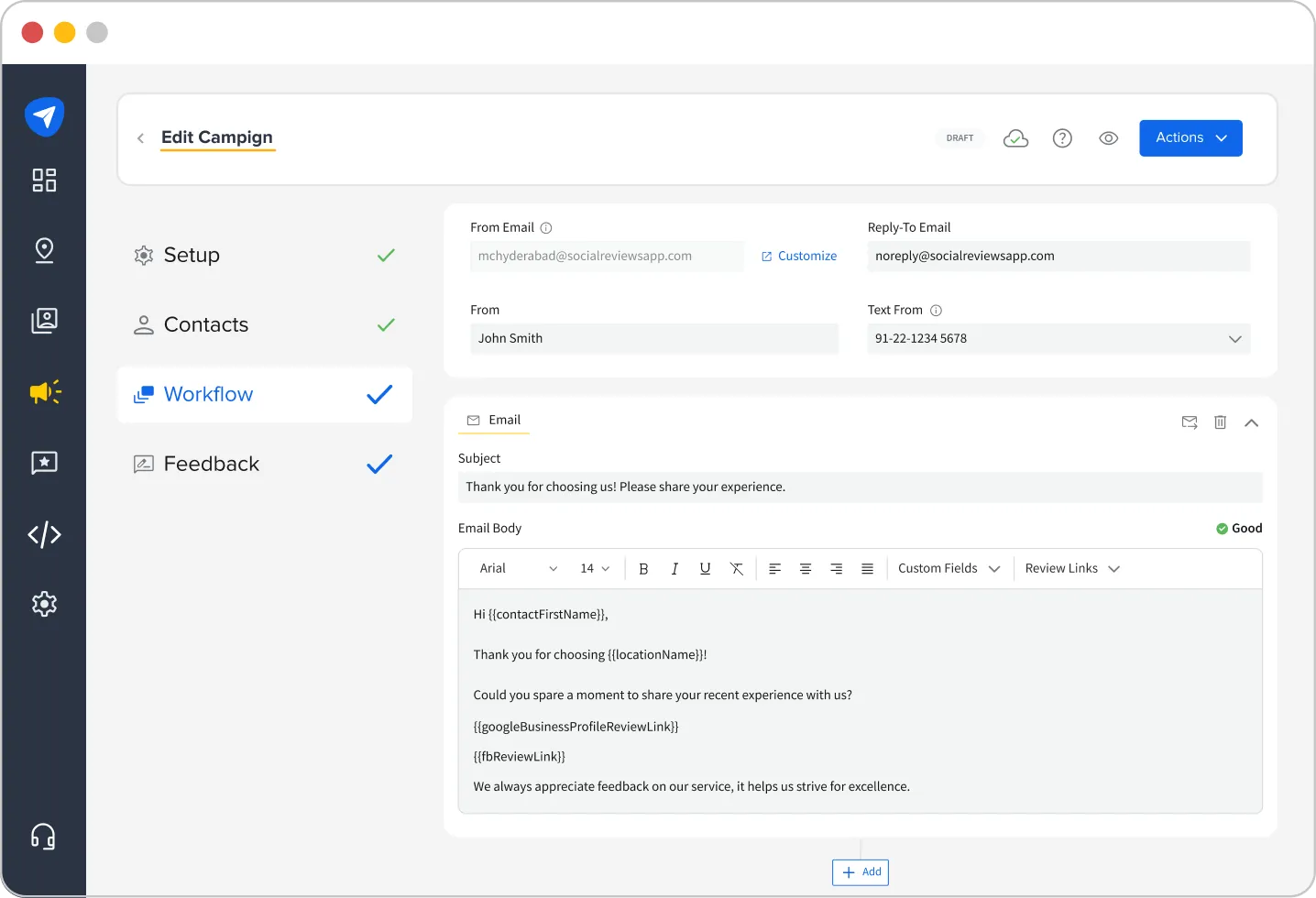
Manage Reviews From One Place
When you don’t gate reviews, a mix of positive and negative feedback is inevitable—and that’s okay. What truly matters is how you respond. Addressing concerns professionally can turn negative reviews into trust-building opportunities.
With centralized dashboard of SocialPilot Reviews, businesses can:
- Monitor reviews across Google and Facebook in one place, ensuring no feedback goes unnoticed.
- Respond fast to all reviews—positive or negative—showing clients the value of their opinions.
- Participate actively online by responding to actual comments to support brand credibility.
One response at a time, welcome negative reviews, address them, and create trust instead of running from them.
💡 Bonus Feature: The AI-powered response generator suggests professional, personalized replies so businesses can engage with reviews efficiently without sounding robotic.
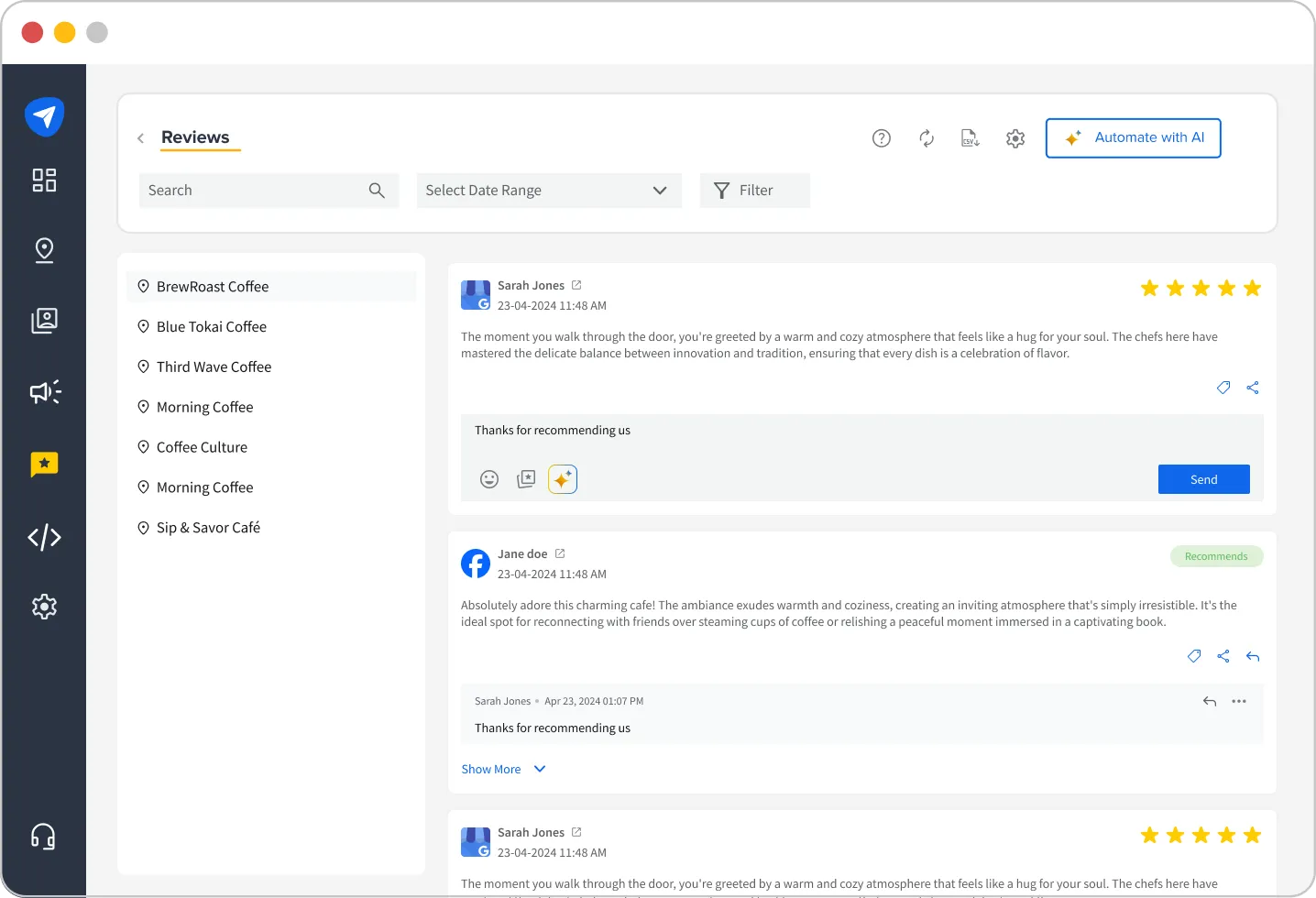
Engage With Every Review—Good or Bad
Responding to all reviews is key to building trust. SocialPilot Reviews makes this easy by:
- Encouraging brands to reply to every review, whether it’s glowing or critical.
- Helping turn negative reviews into positive impressions with professional, well-crafted responses.
- Showing customers they’re valued, reinforcing long-term loyalty.
- By engaging with customers transparently, businesses boost credibility and enhance their reputation.
Ethically Market Your Reviews
Your best marketing asset? Real, authentic customer feedback. SocialPilot Reviews helps businesses:
- Feature genuine reviews on social media, building brand trust.
- Use Review widgets to showcase positive feedback on your landing pages.
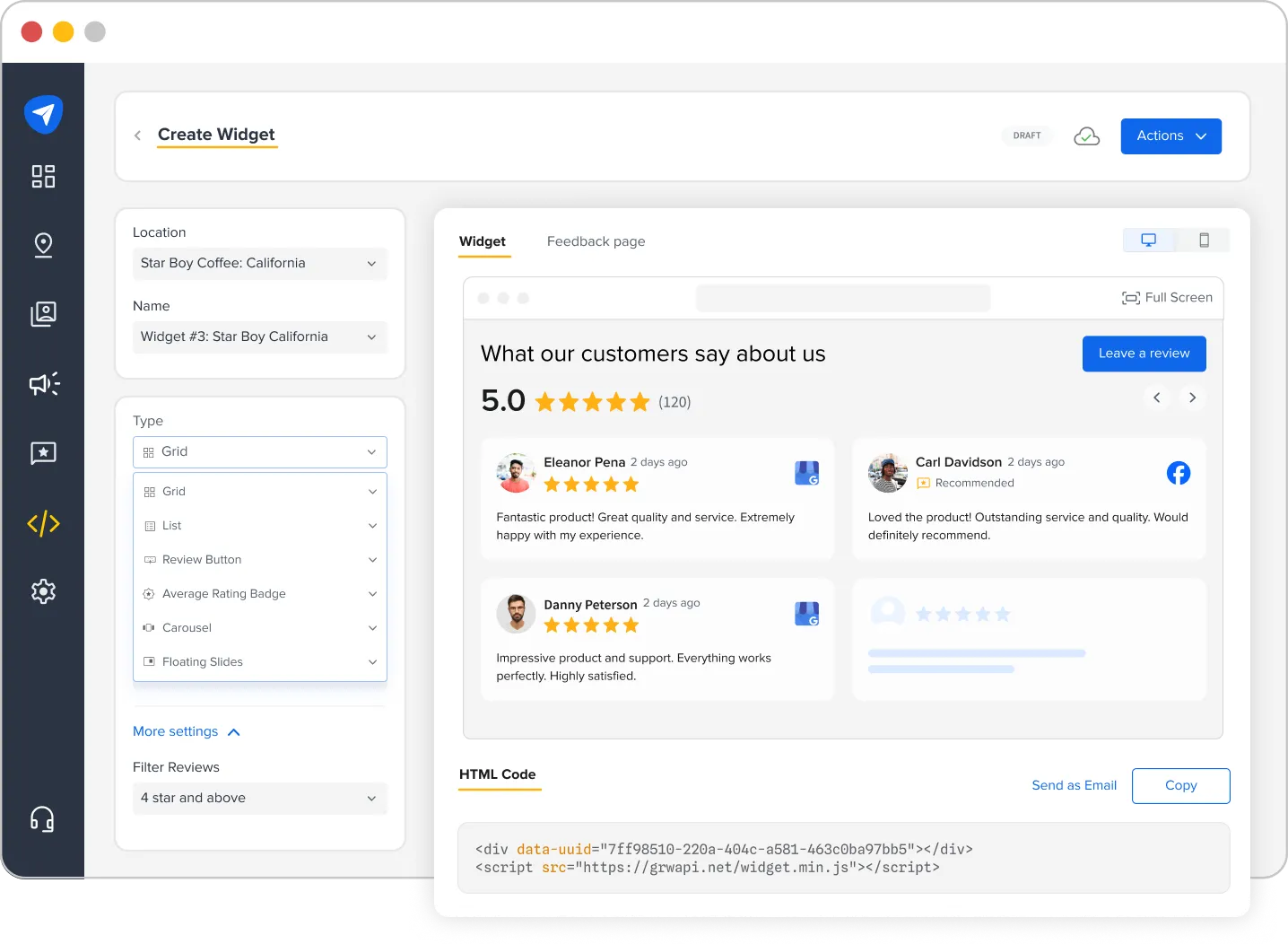
Want to manage online reviews the smart way? SocialPilot Reviews makes it easy, ethical, and effective.
Conclusion
Review gating may seem like an easy way to maintain a positive image, but it comes with serious risks—Google bans it, the FTC imposes heavy fines, and customers quickly lose trust when they detect manipulation.
The smarter approach? Collect reviews ethically. Focus on delivering great service, ask all customers for honest feedback, and engage with every review, whether positive or negative.
With SocialPilot Reviews, businesses can automate review collection, manage responses, and showcase authentic feedback while staying compliant with Google review gating policies. A strong reputation isn’t built by filtering reviews; it’s built by earning them.
